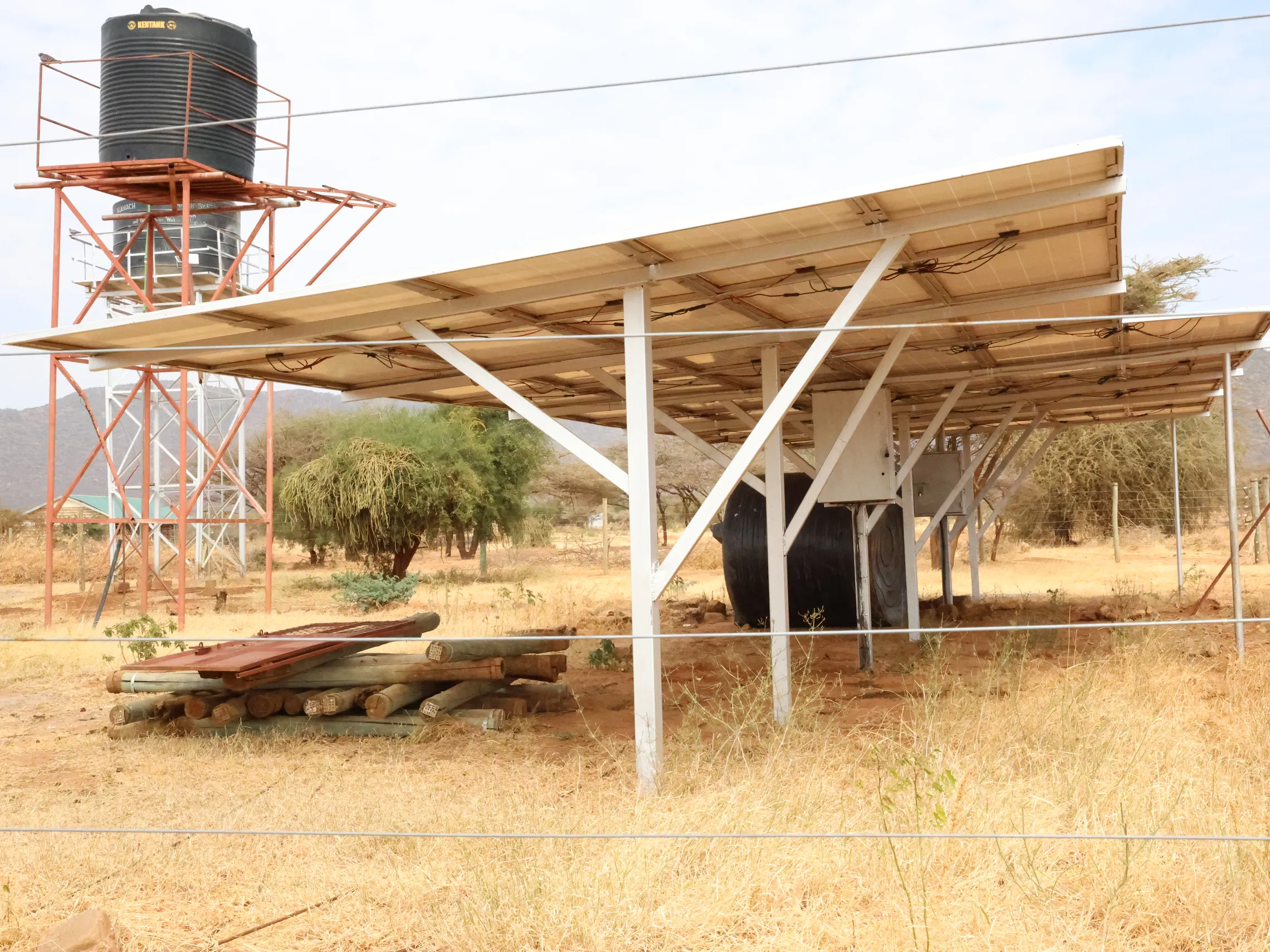Confronting water scarcity in ASAL communities
In several ASAL communities in Kenya, inclusive IWRM approaches are contributing to heightened equity in water access and collective responsibility for the preservation of water.

Severe water scarcity in Arid and Semi-Arid Lands (ASALs) poses challenges for communities to thrive, leading to potential conflict over limited water access. And while communities like Alamach have learned to cope with their geographic constraints, the biting effects of climate change are further depleting water sources.
Unfortunately, the situation in Alamach and nearby communities has worsened over the last three years, with rainwater, traditionally relied upon for their livestock and farmlands, now gone.
A water-stressed community under duress
Navigating the rugged terrain of Burat Ward, Isiolo County on a hot sunny afternoon reveals dry riverbeds that have turned into walkable pathways, dead animals along the roadside, and wilting trees. Alamach, severely affected by climate change, recently witnessed a violent encounter, according to its Community Chairperson, Ameruka Edung. 'A few months ago, we lost several of our community members who were killed in a gunfight with the neighbouring community. The (neighbouring) community came looking for water and pasture for their animals, which we already had very little of.’
The water shortage is also impacting people’s livelihoods, and access to water for drinking, cooking, and sanitation. Explains Mary Akeno, a resident of Alamach: ‘It has not always been like this. We know that our area rarely receives rainfall, but not receiving a single drop in the last three years has taken us by surprise. Are the gods punishing us? A few months ago, I had to walk eight hours every day to fill up a 20-litre jerrycan of water.’

Rehabilitated borehole for the Alamach community
Climate proofing water systems
Suffice it to say, climate change effects have radically altered community access to water.
SNV, in partnership with the Frontier Counties Development Council (FCDC) and the Alliance for a Green Revolution in Africa (AGRA) is promoting Integrated Water Resource Management (IWRM) approaches with a focus on inclusive planning and decision-making.
James Mwangi, SNV Nexus Advisor in the LISTEN project, explains their strategy.
‘We worked closely with the community. Together, we identified the boreholes* for rehabilitation and solar fitting. We made them aware of each step that we had to take, and why these were important. We trained the borehole committee on aspects of water management, operation and maintenance, and metering. We also connected the community members to the local Water Resource User’s Association so that they can co-design management arrangements of water resources with other users.’
Revitalising community water access
Today, several communities are starting to reap the benefits of the project’s inclusive and collaborative approach.
A solar-powered borehole pump now irrigates a two-acre community vegetable farm and supplies water kiosks for domestic use. The pump is managed by a trained borehole committee responsible for Operations and Maintenance (O&M). They govern and manage the system in compliance with Kenya’s Water Act 2016.
Water from the borehole is pumped into a central tank, which then distributes water to three connected tanks serving the vegetable farm, water kiosk, and livestock watering point. To ensure equitable distribution, a committee member supervises the system and receives a monthly payment from collected water fees.
Crop yields have increased using the same amount of water. Farmers have started adopting sustainable irrigation techniques and land management practices. They’re now practising mulching and minimum tillage and are more aware of the finite nature of water resources.

One of the watering points in Alamach community
Better ‘traffic management’ is leading to more efficient and safer ways of drawing water. People and ‘wild’ animals no longer converge and draw water from the same areas. Two watering points for the exclusive use of animals had been set up: one closer to the borehole (for livestock) and another along an elephant crossing path far away from the borehole.
In addition to gaining their own kitchen garden, students are learning about responsible horticulture production and the value of sanitation. The Kirimara Primary School now has a bustling kitchen garden, which draws its water from the school’s rehabilitated borehole. The garden serves as a training area for students interested in horticultural production. In terms of sanitation, Beatrice Rukaria, a teacher at Kirimara Primary School, explains, ‘The Kirimara borehole used to be an eye sore. It was painfully funny that the borehole has always been close to us, yet we did not receive any water. With the rehabilitation of the borehole, students rarely miss school.’
Groups like the British Army Training Unit in Kenya (BATUK) have been tapped to support water conservation and community-building initiatives. Beyond carrying out their military duties, BATUK members support communities through environmental protection, water provision through borehole drillings, employment creation, medical outreach campaigns, and economic stimulation.

Solar-powered rehabilitated borehole at Kirimara

BATUK Community Engagement team with Alamach community members
The examples above highlight the crucial connection between water availability and various issues like food security, conflict reduction, health, and economic development. They show that locally driven, practical measures for climate adaptation are vital, especially in ASALs. And, by involving the community and fostering stakeholder collaboration, building more water-resilient communities is possible.
Photos by SNV's James Mwangi and Harold Odoro, and BATUK's Grace Wangui
Broadening IWRM
Equity is the centrepiece in SNV's water resource management approaches. Within the organisation and with our partners, we contribute to fairer and more sustainable water management arrangements and outcomes that benefit people (current and future generations) and the eco-system.